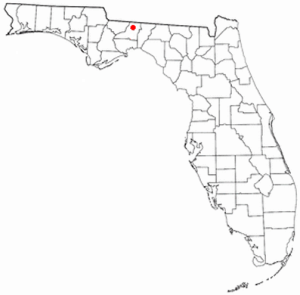
Bradfordville is an unincorporated community in northern Leon County, Florida, United States. It is 8 miles (13 km) north of Tallahassee and south of the Florida/Georgia state line by 8 miles (13 km) at the intersection of US 319 and County Road 0342. Elevation is 237 feet.
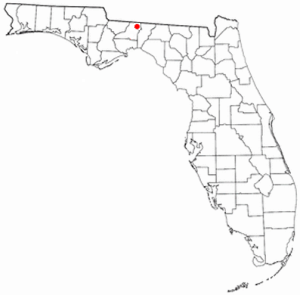
Miccosukee is a former small unincorporated community in northeastern Leon County, Florida, United States. It is located at the junction of County Road 59 and County Road 151. Miccosukee was a major center of the Miccosukee tribe, one of the tribes of the developing Seminole nation, during the 18th century.

Woodlawn was a large plantation of 2,503 acres (1,013 ha) located in northern Leon County, Florida, United States established by Dr. Griffin Holland in 1834. Holland was married in 1839 to Margaret Whitaker.

The William G. Ponder Plantation was a large cotton plantation of over 5,756 acres (2,329 ha) situated in northeastern Leon County, Florida, United States and established by William G. Ponder.

Chemonie Plantation was a medium-sized cotton plantation of 1,840 acres (740 ha) in northern Leon County, Florida, United States established by Hector Braden.
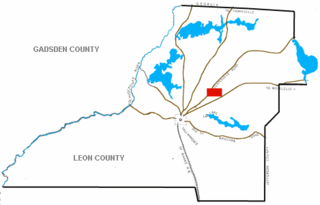
The House Place Plantation was a small cotton plantation of 1,800 acres (730 ha) located in central Leon County, Florida, United States established by R.A. Whitfield.

Southwood Plantation was a large cotton plantation of 5,000 acres (20 km2) located in southern Leon County, Florida, United States and owned by George Taliafero Ward.

In 1824, in appreciation of the enormous service rendered to this country by the Marquis de Lafayette during the Revolutionary War, Congress voted to grant him a full township in the Florida Territory. This tract was called the Lafayette Land Grant and encompassed over 23,000 acres. While the Marquis never came to visit his property, he designated an agent to sell parcels of it on his behalf. The 2,400 acres upon which Goodwood Plantation was sited was purchased by Hardy Croom from the Lafayette Grant in 1834.

Orchard Pond Plantation was a large cotton plantation originally of 8754 acres, (35½ km2) developed and owned in the 19th century by Richard Keith Call, attorney, planter and future Territorial Governor, in what is now northwestern Leon County, Florida, United States. In 1860 he owned 118 slaves to work the 1300 acres of improved land.
Live Oak Plantation was originally a small cotton plantation of 1,560 acres (630 ha) located in central Leon County, Florida, United States established by John Branch who arrived in Florida in 1832 and served as Florida Territorial Governor while living at Live Oak for 15 years.
Miccosukee Plantation was a medium-sized cotton plantation of 2517 acres (10 km2) located in eastern Leon County, Florida. It was developed by John Miller, from Duplin County, North Carolina, who had migrated south during the period of Indian Removal in the 1830s. He depended on the labor of enslaved African Americans to develop the plantation and produce cotton as a commodity crop.

Barrow Hill Plantation was a large cotton plantation of 3,990 acres (1,610 ha) located in central Leon County, Florida, United States. It was established by John S. Winthrop.

Ring Oak Plantation is a large quail hunting plantation located in northeast Leon County, Florida.

Loveridge Plantation is a quail hunting plantation located in northern Leon County, Florida, United States and established by George H. Love. Loveridge began as 1,000 acres (400 ha) on the northwest corner of Lake Miccosukee. In 1956, Love acquired an additional 10,500 acres (4,200 ha) of Sunny Hill Plantation from the estate of New Jersey Governor Walter E. Edge.
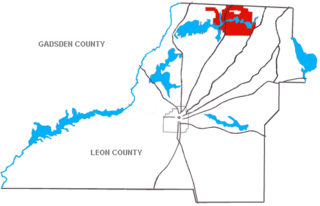
Foshalee Plantation was a large quail hunting plantation located in northern Leon County, Florida, United States.
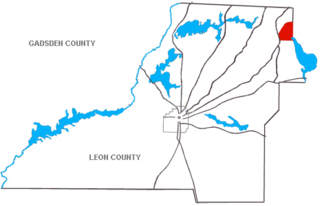
Norias Plantation is a small quail hunting plantation located north of Lake Miccosukee in northeastern Leon County, Florida, United States.
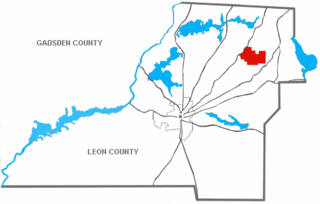
Woodfield Spring Plantation was a large quail hunting plantation in northern Leon County, Florida, United States.
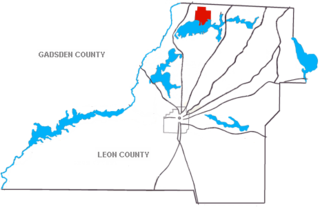
Tall Timbers Plantation was a quail hunting plantation located in northern Leon County, Florida, United States established by Edward Beadel in 1895.























